Our Craftsmanship Standards is a series of articles that take you behind the scenes of Paperblanks. Quality is the single most important part of the design process of our books. We attend to each detail and apply rigorous quality control checks to every component of our journals.
At Paperblanks, we believe having the pages lie flat when you use a book is one of the signatures of fine bookmaking. When we design our blank books we emphasize they open as flat as possible, knowing that this is one of the most pleasing – yet also functional – aspects to using a writing journal. This is why we describe our journals as functional art.
How We Do It
So what goes into the construction of a Paperblanks book to achieve this lay-flat binding?
1. Edition Binding
First, we never glue our book block to the spine of our covers. Instead, we affix our book block to the binding boards of the book cover, which provide a greater flexibility to the book’s structure.
Each page, when opened, moves independently to the book’s spine.
This is typical of Edition binding, which refers to the method of binding identical books in quantity as opposed to binding each individual book by hand. In edition binding the endpapers perform the crucial function of holding the book block inside the cover.
2. Case Construction
Second, our book covers are assembled together with case construction, a binding method where the two binding boards and the spine – each separate pieces – are glued to the outside material of the cover. This material can be paper, cloth, leather or synthetic material.
Once the binding boards, the spine and the outside covers are attached together, they create a flexible joint that reinforces the lay flat opening of the outside cover.
3. Smyth Sewn Binding
Finally – with the exception of the books in our handstitched collection – we use Smyth Sewn binding because it is the most durable binding method sewn by machines instead of by hand.
Known for their quality, books bound by Smyth Sewn binding are superior to what is known as Perfect Binding (when pages are glued directly to the book spine). Perfect binding is by no means perfect because the pages can never open completely flat and they will actually, over time, fall out. Also with Perfect Binding the flexibility of the book is compromised.
Tell Us What You Think
Tell us below what you think about lay-flat binding. How important to you is lay-flat binding?


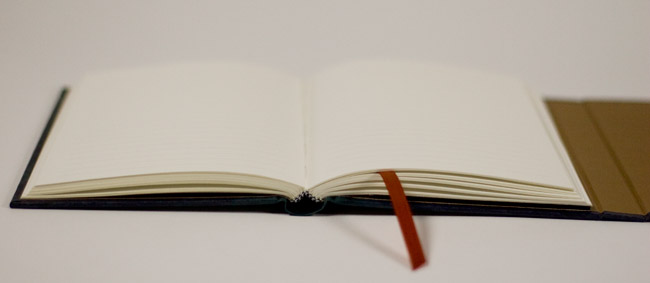
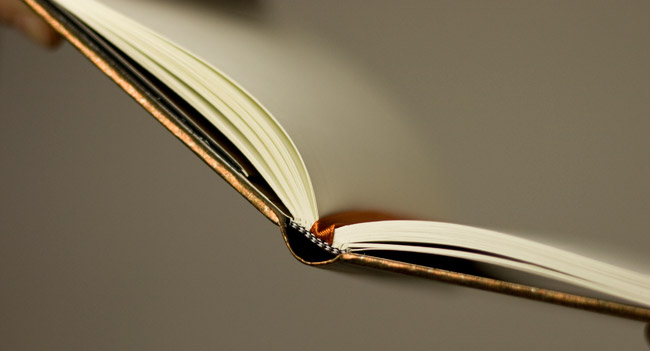
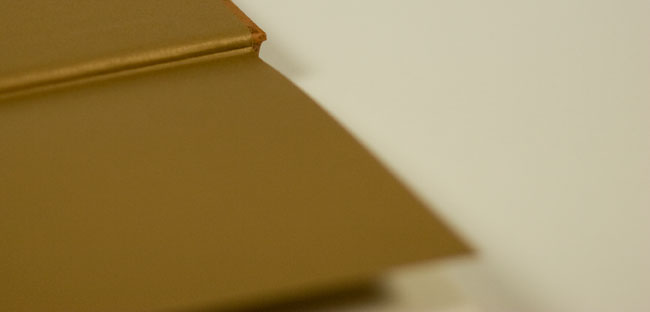
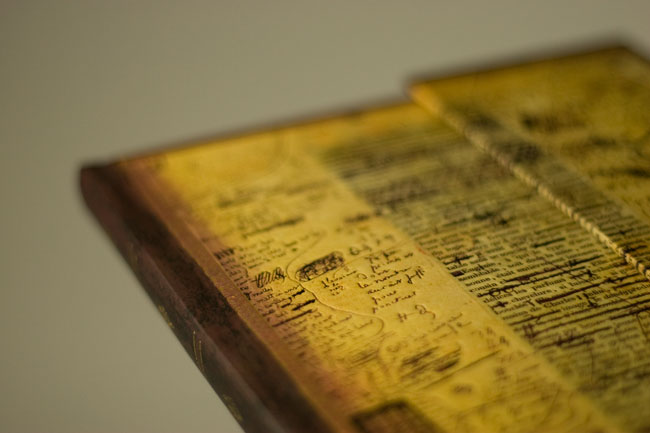
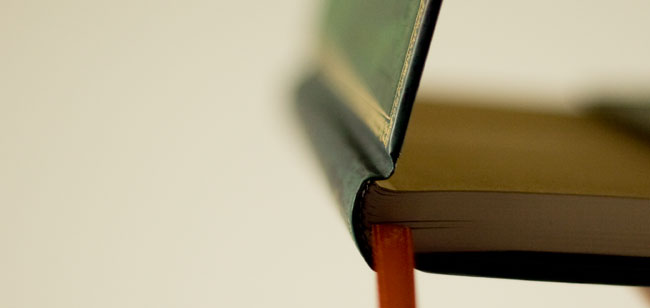
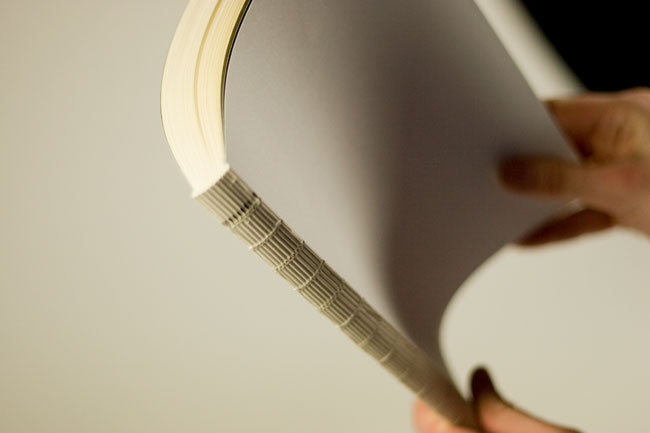




Very nice! Layflat designs are far superior in my opinon.
Is there book-binding or book-making courses you would recommend? Or “book-masters”??
Hi Jayson. Check out our interview with a couple of book-binders we work with as they recommend some good book-binding schools, courses and masters.
Thanks for your interest and let us know if you have any further questions!
The Paperblanks Team
Using your method are you able to get a soft-cover book to lay flat?
Hi Norman,
Thanks for the great question! We’ve talked to one of our in-house binders, and here’s what he had to say:
“I would say that with smyth sewn binding you would be able to get a soft-cover book to lay flat easily. But only if the soft cover is easily folded material. I say this because some of the leather covers I’ve seen on the market are soft, but so thick that they cannot fold very well at the hinge area. As long as the hinge area of the cover is flexible, a smyth sewn bookblock will lie flat. If the soft cover is a paper cover, I would recommend scoring a hinge for the paper to easily fold.”
Hope that helps!
The Paperblanks® Team
Hi,
I’m publishing a 12×12″, 204-page hard-cover, Smythe-sewn coffee table photography book with 10% of the images cross the gutter. I’ve seen books that lay flat, but sometimes it’s so loose that I can see thin strips of the underlying signature and I can also see the stitch holes. I know that laying the book flat is “the thing,” but I can’t seem to appreciate seeing the holes and, at times, the thread inside the gutter.
What are your thoughts about this?
Thanks so much for any guidance you can give!
Mike
Hi Mike,
There are few variables to consider when looking at lie-flat binding options. This is one of those questions that comes down to the bindery machinery, binding method and paper used. There are many types of bindings now that are quite good for photojournalism, so if you are getting your book professionally bound, you could request samples from the bindery first to see their quality. You could probably get good feedback from binderies based on the needs you mentioned above.
Perhaps the reason you are seeing the threads and holes is that there is less glue on the spine as would typically be used for a lie-flat binding, due to the binder not wanting excess glue visible down the center of your photo spreads. Less glue on the spine will enable a clearer image but will result in a looser spine. You might want to look into perfect binding (as opposed to Smyth sewn) for this project, as this would allow for a more flexible spine. Glossy paper, as we suspect you would be using for photos, is also less forgiving for any imperfections and will mean the thread, holes or glue would become more obvious.
We wish you luck!
The Paperblanks® Team